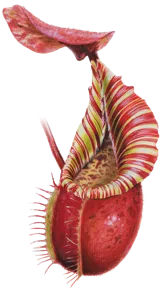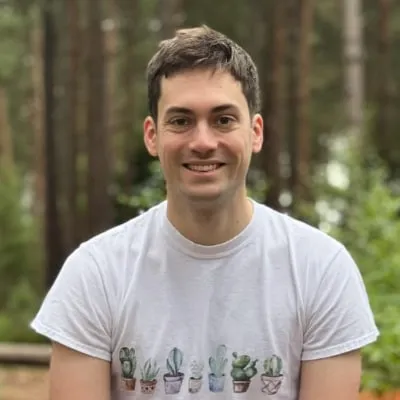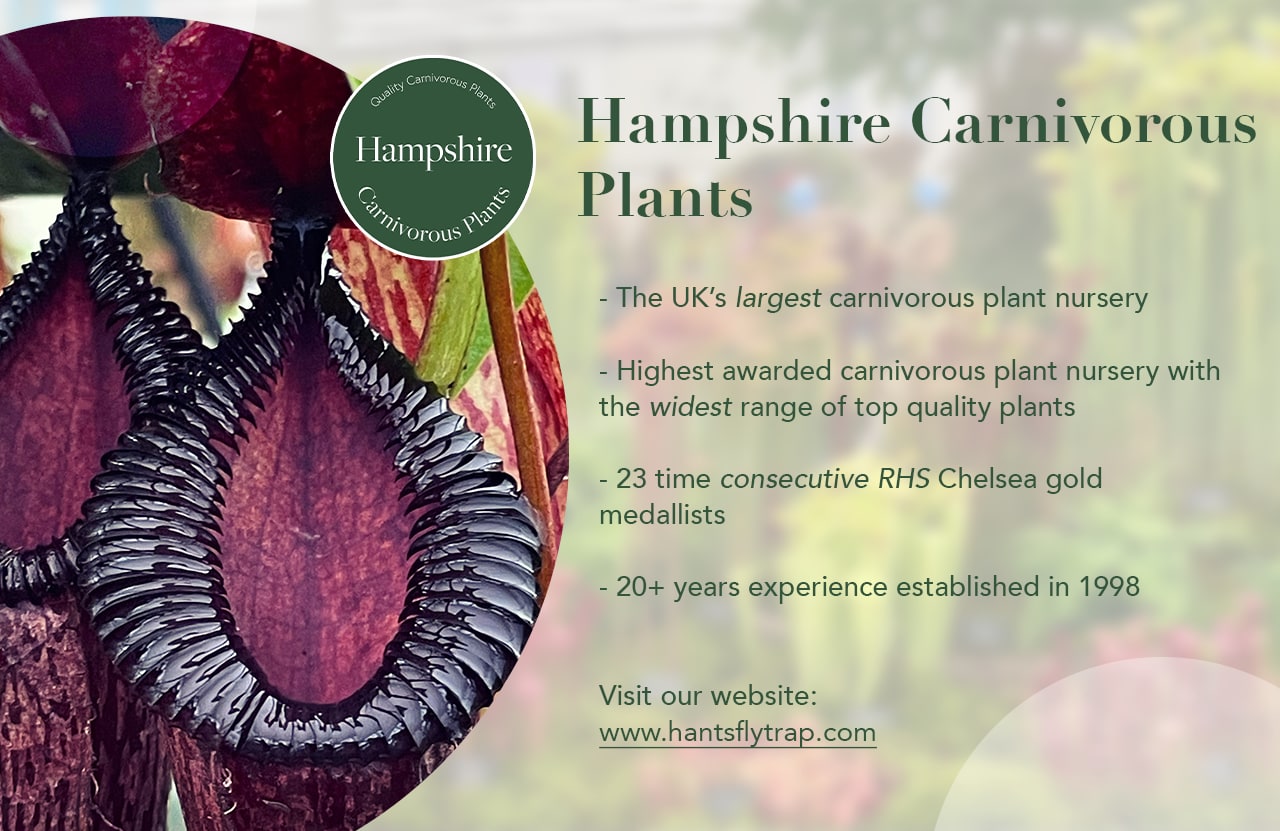Nepenthes burbidgeae x edwardsiana
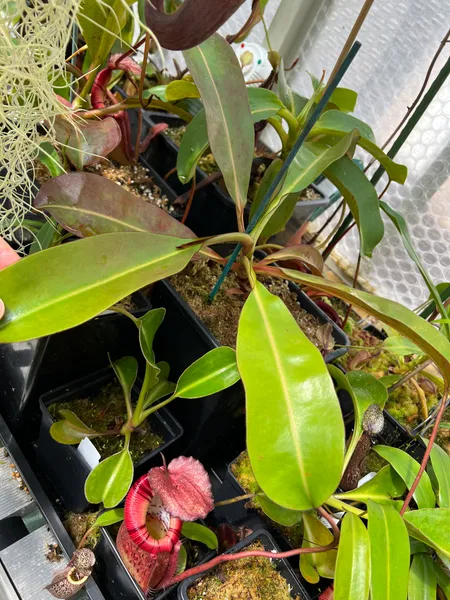 My mature specimen - you can just about spot the hairy leaf margins and tendrils in this shot
My mature specimen - you can just about spot the hairy leaf margins and tendrils in this shot 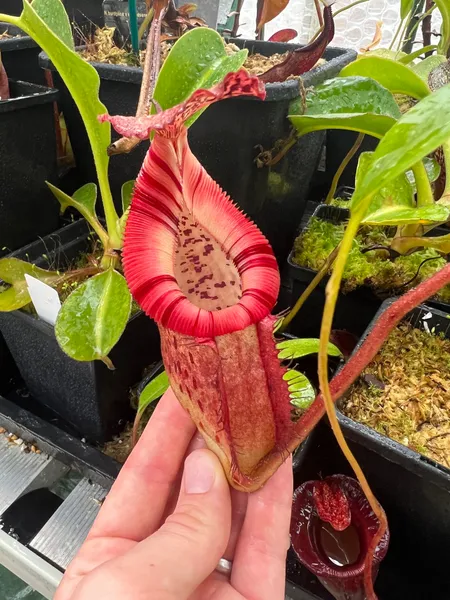 N. burbidgeae x villosa puts on a show during the Autumn, when its colouration is at its best
N. burbidgeae x villosa puts on a show during the Autumn, when its colouration is at its best 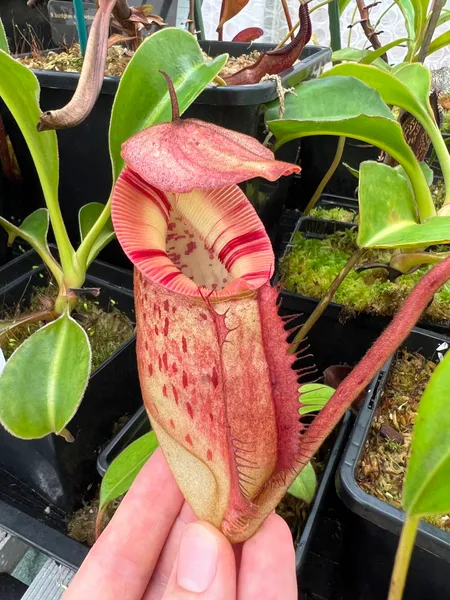 Nepenthes 'burbeddy', a freshly popped pitcher
Nepenthes 'burbeddy', a freshly popped pitcher 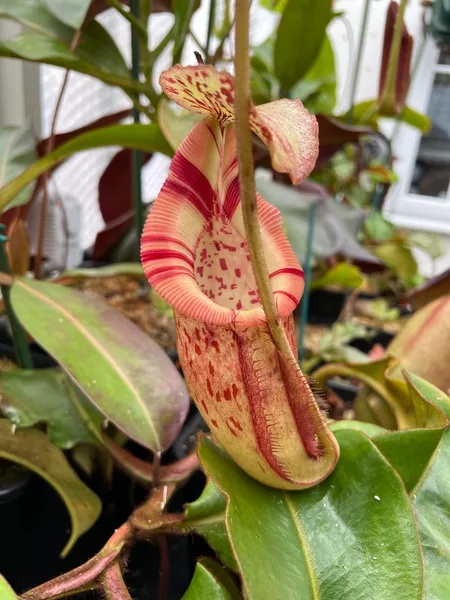 The colours become slightly more muted during high summer
The colours become slightly more muted during high summer Description & Care
This is the famous single-clone release from Malesiana Tropicals (MT), popularly known as “burbeddy”. It’s important to note that this individual was germinated from wild N. burbidgeae seed, and so the male parent is actually unknown. The N. edwardsiana labelling is simply a guess.
My view is that it’s far more likely to be Nepenthes burbidgeae x villosa, or perhaps N. burbidgeae x (villosa x edwardsiana). I’m definitely not an expert on this subject, but to me this plant is more reminiscent of N. villosa or N. x harryana than N. edwardsiana. In my photos above, you might spot the hairy leaf margins, relatively squat pitchers, reduced dentition, and wavy/wiggly tendrils - these are characteristics I tend to associate with N. villosa and its hybrids, more so than crosses involving N. edwardsiana. It also seems more sensitive to high temperatures than many other hybrids involving N. edwardsiana. You can watch a fun video that Carnivero put together on the subject here on YouTube.
Regardless of its paternity, it’s a great plant. This clone’s also a male, and has been used in several lovely hybrids including N. rajah x ‘burbeddy’. Unless you can find a nursery that’s importing from MT directly, your best bet is to find a grower who has cuttings available. While still expensive, this clone’s been circulating in collections for well over a decade now, so it’s gradually becoming easier to get hold of.
How I Grow It
| Media | Long fibre sphagnum moss, perlite, and - optionally - orchid bark (2:1:1). |
| Water | Damp but not wet. |
| Light | Very bright, diffused light. |
| Fertiliser | Maxsea or liquid orchid feed in the pitchers, every two weeks. |
| Temperatures | 12°C (54°F) minimum year-round, with summer highs of ~ 30°C (86°F). |
| Humidity | 70% during the day, rising to over 90% at night. |
Learn more about cultivation with my guide to growing Nepenthes.
Day & Night Temperatures
The female parent - Nepenthes burbidgeae - is a highland species found at elevations of between 1200 and 1800 meters. The male parent - Nepenthes edwardsiana - is a highland species found at elevations of between 1600 and 2700 meters.
On average, the hybrid N. burbidgeae x edwardsiana is likely to grow best with temperatures of approximately 19 - 28°C during the day, and 9 - 18°C at night. This range is highlighted in purple above. For further guidance on the cultivation requirements of hybrids, try out my Nepenthes Interactive Guide .
Buying N. burbidgeae x edwardsiana
| Availability | Hard to find, but has been around for decades so cuttings often available. |
| Borneo Exotics codes |
|
| Recommended nursery | California Carnivores Hampshire Carnivorous Plants |
See Also
I've written profiles of these related hybrids:
